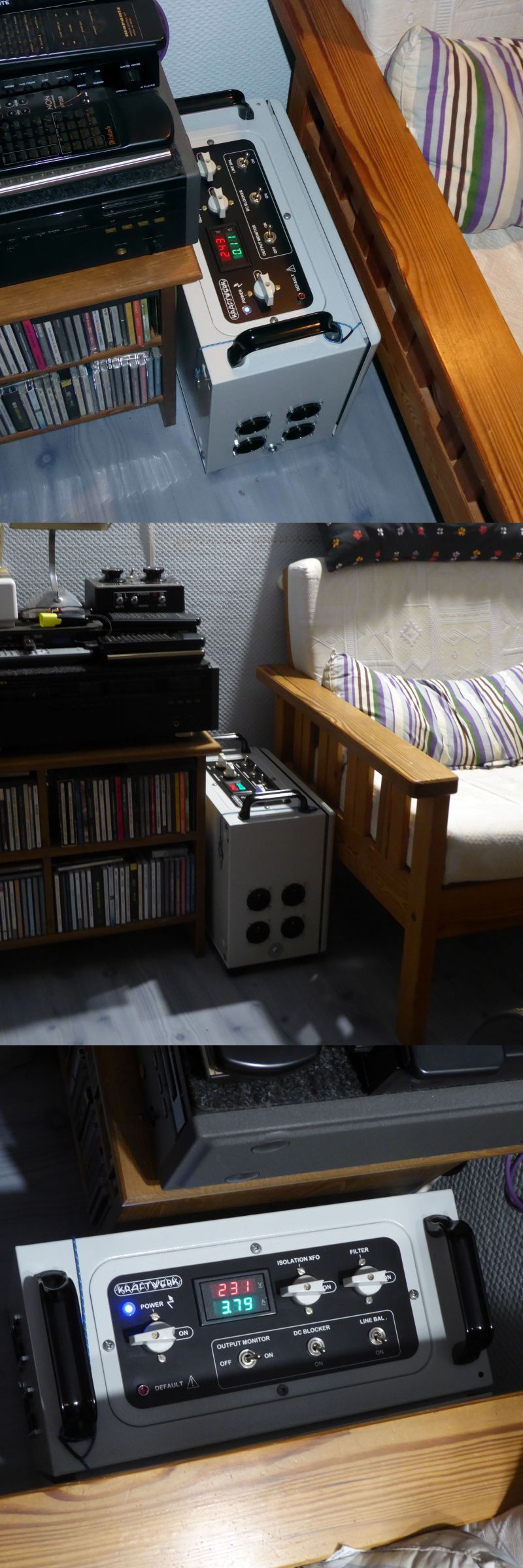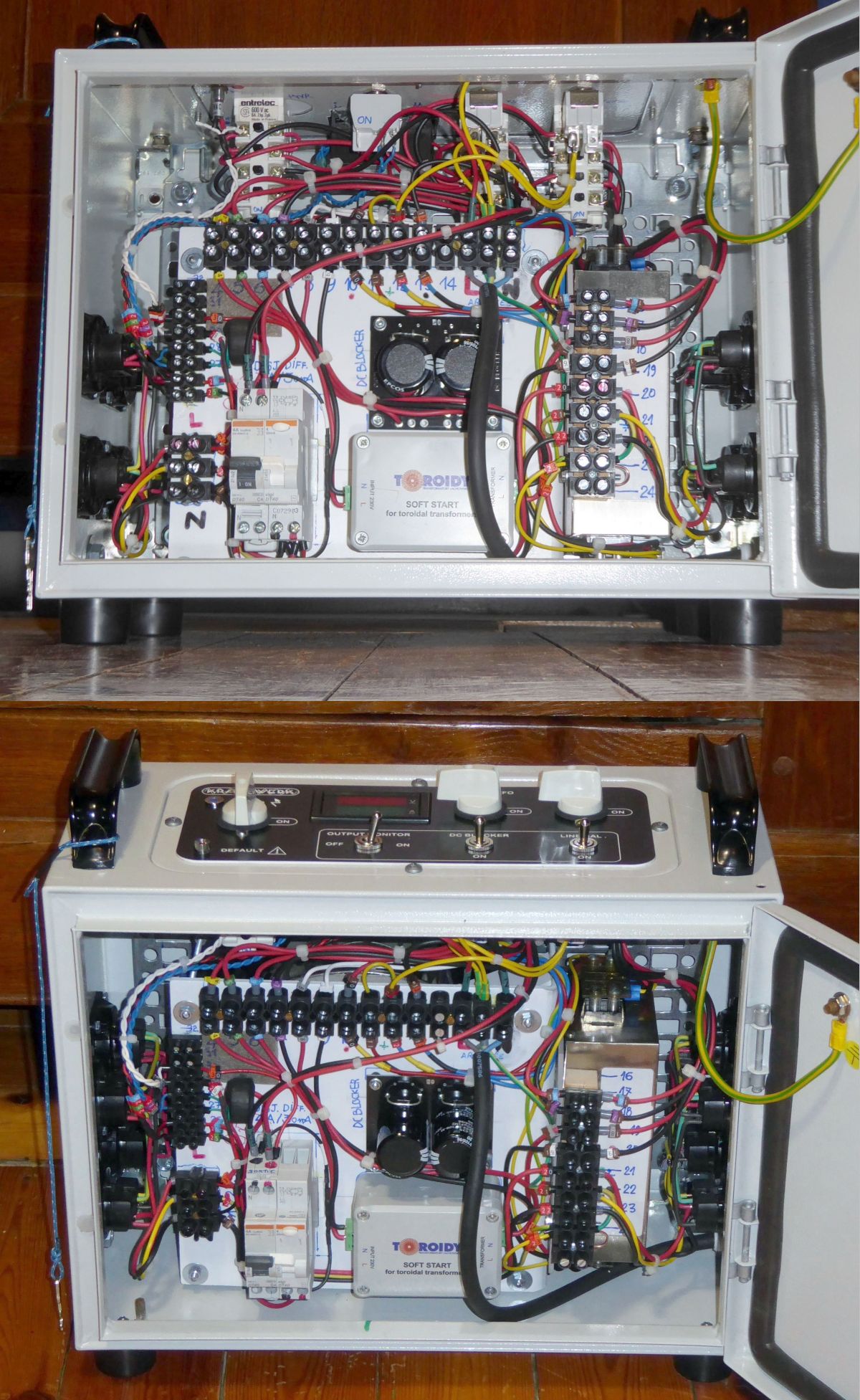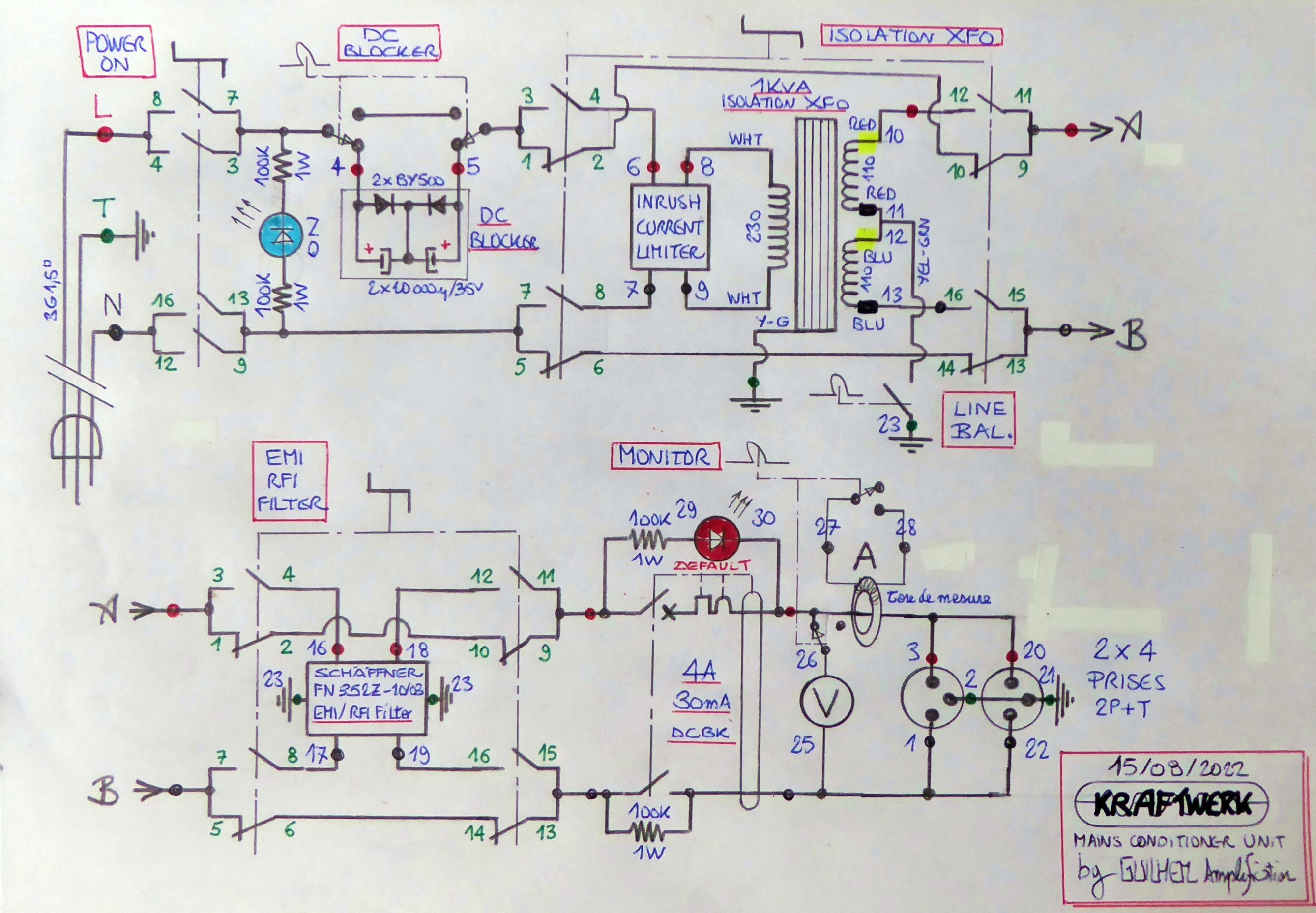Hi,
I just bought two line filters. Each enclusure holds 2 TDK filters, a ZAC2220-00U and a ZAG2220-11P, cross wired.
I guess this is for better filtering.
Which filter should be on the side of the wall plug?
Regards, Gerrit

I just bought two line filters. Each enclusure holds 2 TDK filters, a ZAC2220-00U and a ZAG2220-11P, cross wired.
I guess this is for better filtering.
Which filter should be on the side of the wall plug?
Regards, Gerrit
I didn't look around but these pages might help.
https://product.tdk.com/en/search/emc/emc/power-line/info?part_no=ZAG2220-11S
Hugo
https://product.tdk.com/en/search/emc/emc/power-line/info?part_no=ZAG2220-11S
Hugo
Hi Hugo,
I do have the TDK datasheets.
I was just wondering why they are put in series and with cross wiring? What is in, what is out?
Regards, Gerrit
I do have the TDK datasheets.
I was just wondering why they are put in series and with cross wiring? What is in, what is out?
Regards, Gerrit
They are not cross-wired!! 3 goes to 3, 4 goes to 4... They are back-to-back though, possibly because transient filtering is on terminals 1&2 and the dual arrangement can then be used either way round without losing that.
Hi Mark,
I see the wires crossing each other, but you’re right about the numbers.
I guess this should be a nice way of filtering the mains. I will add a DC-blocker.
Regards, Gerrit
I see the wires crossing each other, but you’re right about the numbers.
I guess this should be a nice way of filtering the mains. I will add a DC-blocker.
Regards, Gerrit
TDK's (datasheet) of this discontinued product, includes a circuit schematic of the internal details. It is not quite symmetric; have a look at the bleeder resistors. A quick study of other filter datasheets from other manufacturers will show you whether the majority of manufacturers put their bleeder resistors on the mains side, or the load side.
However, as mentioned in post #6 above, this arrangement of two filters in the photo of post #1 gives you a Hobson's Choice. You either (A) connect mains to 1&2, load to 1&2 ; or else (b) rotate the assembly 180 degrees then connect load to 1&2, mains to 1&2.
However, as mentioned in post #6 above, this arrangement of two filters in the photo of post #1 gives you a Hobson's Choice. You either (A) connect mains to 1&2, load to 1&2 ; or else (b) rotate the assembly 180 degrees then connect load to 1&2, mains to 1&2.
I guess this should be a nice way of filtering the mains. I will add a DC-blocker.
Hi @gerrittube,
A few years ago, I built a "mains conditioner" similar to what you are thinking about - I called it The Kraftwerk Unit - for powering safely my little auditorium:




Here is the schematic :

T
That’s a nice piece of art, you did a very nice job!
I’m wondering why you make both the filtering and the DC-blocker switchable. What is your experience, do you ever disable these filters?
Regards, Gerrit
I’m wondering why you make both the filtering and the DC-blocker switchable. What is your experience, do you ever disable these filters?
Regards, Gerrit
That’s a nice piece of art, you did a very nice job!
I’m wondering why you make both the filtering and the DC-blocker switchable. What is your experience, do you ever disable these filters?
Regards, Gerrit
Thanks @gerrittube !
Well, in fact, all the features of the Kraftwerk Unit are switchable and can be disabled or enabled on demand :
- DC blocker
- soft start and toroidal isolation transformer
- filter
1 - in case of problem, the faulty element can be isolated and disabled.
2 - many people says that all those devices are detrimental to the quality of etc... OK, let's switch it off : do you hear a difference ?
Do I disable them ? Never... It's not detrimental, no difference heard, plus it safely protects and clean the installation from the mains network flaws.
Please note a trick that was suggested by an audiophile pal : the LINE BAL switch. It enables to feed the circuit in a symmetrical, earth balanced network, thanks to the CT of the secondary of the insulation transformer (2x110V). This can null disturbances by common mode cancellation, somewhere like on a microphone and its balanced XLR connection.
T
Thanks very much for reporting your findings and tricks. I’m not sure if I will add the transformer, but you got me thinking…
Regards and keep building!
Gerrit
Regards and keep building!
Gerrit
Thanks very much for reporting your findings and tricks. I’m not sure if I will add the transformer, but you got me thinking…
Regards and keep building!
Gerrit
Thanks @gerrittube !
The transformer that I used here is a model custom-made from Toroidy in Poland. It is a super-deluxe version with complete mu-metal shielding, potting and reinforced insulation. It is absolutely silent, but it is a 450 Euros item...
Needless to say that you don't need to go that far and I'm sure that you can find classic EI laminations 230V to 2x110V or 2x115V insulation transformers of suitable construction, that can fit the bill for much less !
Over the purpose of creating the symmetrical mains network supply to my Audio installation, this transformer in my Kraftwerk Unit lowers the mains voltage about circa 8-10V, because it is quite high in my home, often reaching 245VAC.
T
- Home
- Design & Build
- Parts
- Double Line Filtering